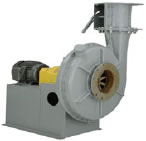 Buying an industrial grade blower? Here’s what to look for!
Buying an industrial grade blower? Here’s what to look for!
July 30, 2014 REDWIRE is news you can use from leading suppliers. Powered by FRASERS.
Posted by Northern Industrial Supply Co. (NISCO)
Northern Industrial Supply Company is your sole source for industrial and commercial heating, ventilation and air-condit... Read more
Subscribe
Free REDWIRE e-newsletter

Blowers are mechanisms that move gas and air. Centrifugal, axial, rotary and positive displacement blowers are only a handful of industrial blowers circulating in the market.
Need to find a high-pressure blower in a hurry for your business? Find the right one in a breeze by taking stock on the following five factors to determine which industrial grade blower is right for your business needs.
Air Flow Rate
The volume of air that moves through a blower is called the air flow rate. Air flow rates are measured in Cubic Feet per Minute (CFM), which is a universal unit professionals use in the commercial heating, ventilation and air conditioning (HVAC) industry.
If the blower is intended to move material along the pipe, make sure to calculate the appropriate amount of CFM so that the substance keeps the necessary velocity for it to pass through rather than sitting immobile or clogged inside the duct or pipe.
Air Density
Remember this simple factoid: the lower the altitude, the higher the air density. The higher the altitude, the lower the air density.
Air density fluctuates when variations in barometric pressure and temperature occur, which will alter the overall functioning of the blower.
Altitude
Will the blower be used on a surface at ground level or inside a high-rise building?
Estimate the altitude of the blower by calculating the number of feet above sea level where it will be in operation.
Static Pressure
Commonly referred to as SP, static pressure is the friction produced when air moves through a duct, filter or pipe.
Static pressure also includes the air flow rate that moves throughout the whole system.
However, corrections must be made when there is a large amount of static pressure on the blower’s inlet, which means additional suction must be accounted for to transfer the air.
Temperature
In combination with altitude, temperature will affect the density of air that passes through.
Normal temperature and pressure (otherwise known as NTP) is the standard unit of measure for selecting industrial grade blowers and fans. The density of dry air is calculated at a base temperature of 20°C or 68°F.
Consider the temperature of the air that will pass through the blower. Since the ambient temperature where the blower is stored may vary, estimate the minimum and maximum temperatures to give a close approximation of which type of blower will work in that environment.
These five factors measures how effectively and efficiently the blower performs.
Need a hand with obtaining those five measurements?
NISCO is here to help. As leaders in industrial air conditioning systems, high pressure blowers and fans, we provide superior custom and engineered solutions for our clients’ industrial ventilation needs at high quality and low cost.
Get certified and expert advice from us today as your high-end industrial supplier of dependable and superior quality air handling equipment and service.
Share
Posted by Northern Industrial Supply Co. (NISCO)
Northern Industrial Supply Company is your sole source for industrial and commercial heating, ventilation and air-condit... Read more